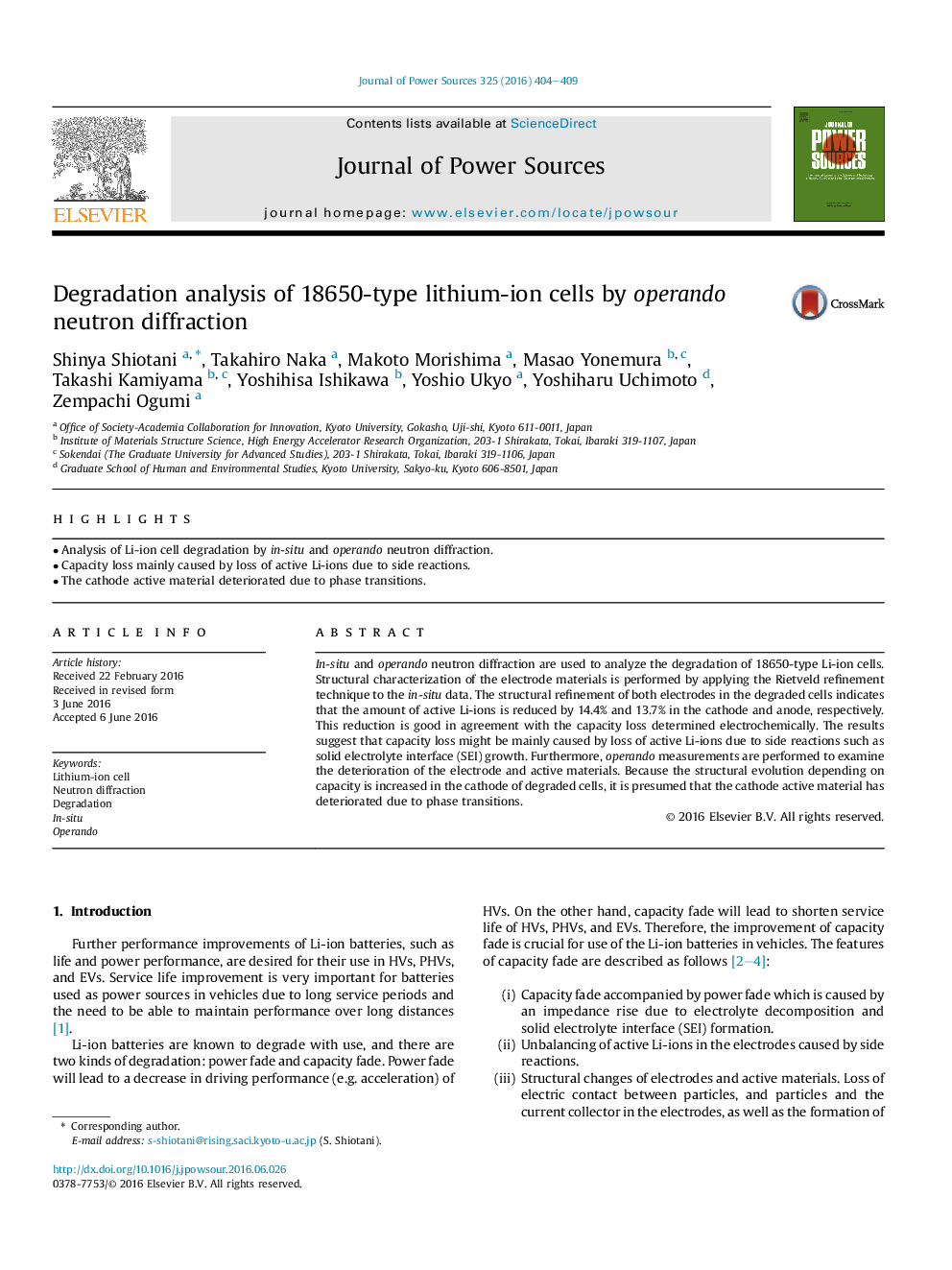| Article ID | Journal | Published Year | Pages | File Type |
|---|---|---|---|---|
| 7727666 | Journal of Power Sources | 2016 | 6 Pages |
Abstract
In-situ and operando neutron diffraction are used to analyze the degradation of 18650-type Li-ion cells. Structural characterization of the electrode materials is performed by applying the Rietveld refinement technique to the in-situ data. The structural refinement of both electrodes in the degraded cells indicates that the amount of active Li-ions is reduced by 14.4% and 13.7% in the cathode and anode, respectively. This reduction is good in agreement with the capacity loss determined electrochemically. The results suggest that capacity loss might be mainly caused by loss of active Li-ions due to side reactions such as solid electrolyte interface (SEI) growth. Furthermore, operando measurements are performed to examine the deterioration of the electrode and active materials. Because the structural evolution depending on capacity is increased in the cathode of degraded cells, it is presumed that the cathode active material has deteriorated due to phase transitions.
Related Topics
Physical Sciences and Engineering
Chemistry
Electrochemistry
Authors
Shinya Shiotani, Takahiro Naka, Makoto Morishima, Masao Yonemura, Takashi Kamiyama, Yoshihisa Ishikawa, Yoshio Ukyo, Yoshiharu Uchimoto, Zempachi Ogumi,
